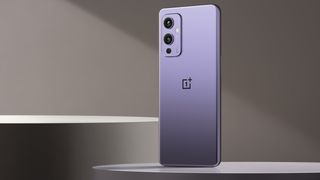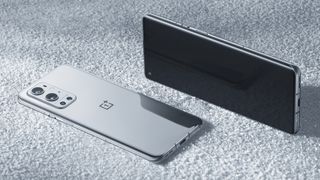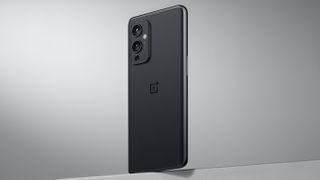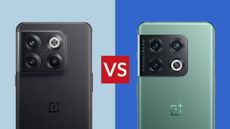The brand new OnePlus 9 and OnePlus 9 Pro have superb displays, powerful processors, clever cooling and energy-efficient processors, taking what’s great about their predecessors such as the OnePlus 8T and OnePlus 8 Pro, and improving on an already winning formula.
But which OnePlus 9 Series phone is most likely to rise towards the top of our best Android phones guide: the entry-level and affordable OnePlus 9, or the OnePlus 9 Pro with its even more powerful photography and higher resolution screen? And which of these two phones is the right purchase for you?
That's what this feature is designed to accomplish – clearly lay out exactly what the OnePlus 9 and OnePlus 9 Pro deliver and then show the differences between them. Thereby making it easier for prospective purchasers to make the right decision for themselves.
- Read T3's OnePlus 9 review
- OnePlus 9 vs OnePlus 8: is the latest OnePlus phone worth upgrading to?
- OnePlus Watch vs Apple Watch Series 6: which should you buy?

OnePlus 9 vs OnePlus 9 Pro: design and display
The new OnePlus 9 and OnePlus 9 Pro don’t look dramatically different from their predecessors: the main visual difference it that the camera bump on the back is now in the corner rather than off-centre, and the OnePlus 9 Pro has a slightly larger display: 6.79 inches to the standard model’s 6.55 inches.
The OnePlus 9 is glass backed and the Pro is aluminium, with the former coming in some slightly brighter colours and the Pro going with more sober shades.
The display in the OnePlus 9 is the same as the one in the OnePlus 8T, a 120Hz Fluid Display. It’s an AMOLED with great colour accuracy and a very bright 1,100nits. It’s HDR10+ certified and has two ambient light sensors with 8,192 brightness levels for smoother automatic brightness adjustments. The display is 2,400 x 1,080 pixels with a 20:9 aspect ratio and a pixel density of 402ppi.
The OnePlus 9 also has some useful features designed for gamers including a Pro Gaming Mode to eliminate distractions, dual stereo speakers with Dolby Atmos and Qualcomm’s latest audio codec and platform for crisp in-game audio.
The display in the OnePlus 9 Pro is different: OnePlus calls it Fluid Display 2.0 and it uses low-temperature polycrystalline oxide (LPTO) in its OLED to cut power consumption by up to 50%. It does that by adjusting the refresh rate based on what you’re doing, going as low as 1Hz for viewing photos or reading text and as high as 120Hz for gaming. It’s much more responsive for games too thanks to its 360Hz syncing between processor and display. Color reproduction has received an A+ rating from DisplayMate and it’s as bright as it’s accurate, with up to 1,300 nits of peak brightness. Resolution is 3,216 x 1,440 at 525ppi and the aspect ratio is 20.1:9.
OnePlus 9 vs OnePlus 9 Pro: processor and storage
The processor in the OnePlus 9 and OnePlus 9 Pro is Qualcomm’s Snapdragon 888 5G, an octa-core processor promising up to 25% better CPU performance and 35% better GPU performance than the previous generation. It’s also more energy efficient. The 5G radio is a third-generation model that delivers faster, lower latency connections than previous-gen chips. The processor is teamed with 8GB or 12GB of LPDDR5 RAM capable of up to 6,400Mbps and the on-board storage is 128GB or 256GB for both the OnePlus 9 and the OnePlus 9 Pro.
The Snapdragon 888 and the 5G radio should produce less heat than their predecessors, and the OnePlus 9 and OnePlus 9 Pro also have a five-layer cooling system that combines copper, graphite and vapour chambers to keep the handset cool.
The hardware improvements are accompanied by version 11 of OxgygenOS, with improved memory optimisation that compresses RAM and uses phone storage as additional RAM to enable you to run more apps simultaneously.

OnePlus 9 vs OnePlus 9 Pro: cameras
The camera system in the OnePlus 9 is superb. Developed in association with photography legends Hasselblad, the triple-camera system delivers much more accurate colour reproduction than previous models. There’s a 50MP ultra-wide camera with a Sony IMX766 processor, and its curved Freeform Lens dramatically reduces edge distortion: where it’s 10% to 20% on the ultra-wide lens of comparable phones, it’s around 1% here. The lens also enables macro photography at distances as short as 4cm.
The second camera here is the 48MP main camera, which has a Sony IMX689 sensor, 12-bit RAW and 3-HDR. It delivers cleaner daytime and night photos than before, with higher dynamic range in videos. There’s also a fun tilt-shift effect and a monochrome camera for more detail in B&W photos. The main camera offers 8K video recording at 30fps, time-lapse video and better low light recording. The front camera is 16MP.
The Hasselblad link-up has resulted in a new Hasselblad Pro Mode for more professional photography, offering Hasselblad-level sensor calibration – a first for smartphones. It enables you to manually adjust the exposure, the ISO, the white balance and other key options and you can work with images in 12-bit RAW.
The OnePlus 9 Pro benefits from all of these things and adds a few extra of its own. It has an 8MP telephoto lens with 3.3x optical zoom and 30x digital zoom and its main camera can shoot 8K at 30fps and 4K at a blisteringly fast 120fps. It can also shoot portrait video, stabilise shots and use focus tracking as you film.

OnePlus 9 vs OnePlus 9 Pro: batteries and charging
The OnePlus 9 battery is 4,500mAh and has a new design that enables it to charge from 1% to 100% in 29 minutes. Warp Charge 65T fast charging gives you a day’s power in about 15 minutes and the supplied adapter can also be used to charge devices such as laptops and tablets.
In addition to the wired fast charging of the 9, the OnePlus 9 Pro also has Warp Charge 50 Wireless. This outperforms some wired chargers, going from 1% to 100% in 43 minutes.

OnePlus 9 vs OnePlus 9 Pro: price and verdict
The OnePlus 9 starts at £629 for the 8GB model with 128GB of storage, rising to £729 for 12GB and 256GB of storage. The OnePlus Pro is £829 for 8/128GB and £929 for 12/256GB. That means they’re both coming in at considerably less than the Samsung Galaxy S21/S21+ or an iPhone 12/iPhone 12 Pro.
Of the two phones, we think the OnePlus 9 is the better option for most people: it’s more affordable, just as powerful and while its camera setup isn’t quite as powerful as the one in the Pro it’s still extremely impressive. If money’s no object, though, go for the Pro: we rated the OnePlus 8 Pro one of the very best Android handsets ever made, and with the 9 Pro OnePlus takes that winning formula and makes it even more powerful.
- These are the best phones the OnePlus 9 Series needs to compete with











